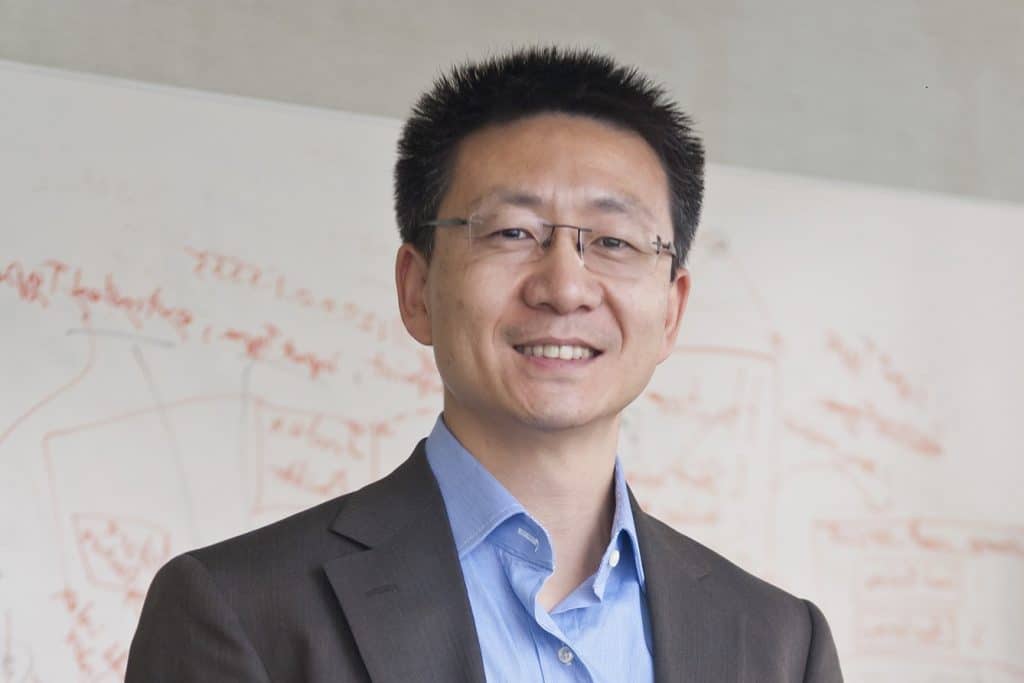In February last year, online grocery pioneer Ocado revealed its SoMA project, a robot arm capable of picking delicate items like fruit. Three months earlier Amazon announced its first successful automated drone delivery.
These events gave shoppers in the UK and the wider western world a tantalising first glimpse into what the world will look like when these technologies inevitably become a significant part of our lives.
The same year, a company which exists largely under the radar of many western consumers also completed its first commercial drone delivery. In the 12 months since its maiden delivery, Chinese online retailer JD.com has developed that tantalising first glimpse into a fledgling reality – on an immense scale.
“In China we have 335 warehouses including seven state-of-the-art fulfilment centres,” said Dr Hui Cheng, head of JD.com’s Silicon Valley research centre.
“We also have just below 7000 distribution stations. That covers around one billion people in China for same day and next day delivery.
“If the order is placed before 11, you’ll get it the same day.”
Operating on such a scale alters the role of these technologies. While other companies have used them largely as showcases to establish their technological dominance over rivals, with a view to integrating these in the future, for JD.com it has been driven by necessity.
We’re not waiting to totally solve every technical challenge before using it
Across its vast estate, the ecommerce giant already utilises fully automated warehouse technologies including self-driving forklifts and automated sorting systems.
“We already use robotic solutions especially for sorting or picking related applications,” Cheng told the Retail Gazette.
“This is the most challenging part of the whole logistics system. We’re also developing more advanced technologies for the harder part of picking using robotic arms.”
Outside of the company’s 7000 distribution centres, automation plays an equally vital role in allowing it to run on such a scale.
“Of our 100,000 employees in logistics, 66,000 are in delivery, they cannot match the demand,” Cheng said.
“That’s why we think autonomous delivery systems can certify the future of delivery including the scale of complexity of ecommerce.”
This programme has two main facets, which aims to make delivery as fast and accessible as possible to the highest proportion of people.
The first is busy urban cities, full of traffic, skyscrapers and expensive property prices. JD.com’s solution to this is autonomous ground delivery vehicles. These are basically boxes on wheels, which can navigate their way to a customer’s house all by itself.
“In big cities like Beijing or Shanghai it’s extremely expensive for the real estate to store those products,” Cheng said.
“So that’s why we need very advanced and fully automated systems, in order to reduce cost related to storage. Because they’re so close it makes the robotic deliveries even better suited for the situations.”
These are already in their second-generation phase, and although Cheng admits there is “lots of room for improvement” he explains that one of the reasons JD.com has pulled so far ahead of its rivals is because it owns the “technology and operation” of its new systems.
“We can mature each use case by themselves, we’re not waiting to totally solve every technical challenge before using it,” he told Retail Gazette.
“That’s a big advantage, rather than having to wait for it to be perfect before deployment.”
This real-world experimentation is where things get even more interesting, leading to the development of a new field for Cheng’s team called “social robotics”, focusing on what happens when robots have to interact with the public in the real world.
“In China the walkways are actually much larger than in the west, just because there are a lot of pedestrians,” he said.
“Our robots can tell when someone is moving towards them, they can smartly either choose to stop, allow them to pass or they can go around them depending on the situation.
What we’re looking towards is using technologies to make people’s lives easier
“People are generally very accommodating too, although they’re very curious they don’t just surround it. We’re learning a lot more about the social interactions between the robots and the people, it’s a very exciting area.”
Despite China having some of the largest cities in the world, a huge portion of the world’s most densely populated country resides well outside the city limits in rural, remote locations.
Reaching these locations is what JD.com considers “social responsibility”. This is where “autonomous aero-delivery” or drones come into play.
“Drones are for very specific use cases,” Cheng said.
“What we’re looking towards is using technologies to make people’s lives easier. That is more difficult for people who live in areas where the terrain is really challenging, where vehicle-based delivery is not as economical as it is in big cities.
“What we have in villages is what we call village ambassadors that help villages to get familiar with JDs operation, promote it and help them to order.”
These village ambassadors will receive drone deliveries from larger distribution centres in hard-to-reach areas and then distribute them to villagers.
This programme has reportedly “significantly simplified” operations and allowed expansion into areas which have previously been inaccessible or uneconomical for traditional delivery methods. What’s more is that these drones can also return with fresh produce from these areas, aiding the development of their local economies.
Not only has JD.com ploughed ahead in developing these technologies, teasing a drone in production that can deliver goods weighing up to a tonne, but it has provided a map of how they will be integrated into the real world.
They have also demonstrated that automation can have a positive impact on not only retail, but the wider world.
Click here to sign up to Retail Gazette‘s free daily email newsletter


















